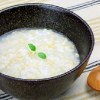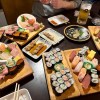Critics said “Maruta Shiga” was a reference to human experimentation during World War II, but some see the same problem in his new name.
Last week My Hero Academia, one of the most successful and internationally popular currently ongoing anime/manga franchises, was the center of a major controversy when it was revealed that a villainous scientist character’s true name was Maruta Shiga. Maruta, the Japanese word for “log,” was also the term used by the Imperial Japanese Army’s Unit 731 for the test subjects it rounded up for human experimentation projects in China prior to and during World War II, and the Maruta Shiga character is also involved in human experimentation.
Both My Hero Academia manga publisher Shueisha and series creator Kohei Horikoshi issued apologies for any offense the name had caused, with Horikoshi insisting that the similarity had been purely coincidental. His intent, he said, was to give the character (a short, portly man) a name that evoked an image of rotundness, and also for his name to contain an element borrowed from “Shigaraki,” another My Hero Academia villain the scientist idolizes.
Shueisha and Horikoshi promised a name change, and less than a week later, the change has already been implemented in digital versions of the manga. The character’s name is now Kyudai Garaki, and My Hero Academia’s English translator Caleb Cook tweeted some pretty sound logic behind Horikoshi and/or Shueisha’s decision.
PS3/ Doc's new name (updated in all digital versions of chapter 259):
— Caleb Cook (@CDCubed) February 10, 2020
Kyudai (球大) = ball + big (in same spirit as "round + fat")
Garaki (殻木) = husk + tree (end of Shigaraki, instead of the start. Also, the "wooden" element is preserved through "tree") pic.twitter.com/upHVhYDOQV
PS4/ And by wooden element, I mean thishttps://t.co/GUc7v76smj
— Caleb Cook (@CDCubed) February 10, 2020
However, it looks like once again the name leaves the door open to interpretation that it’s a reference to World War II-era Japan’s dark medical science legacy.
As pointed out by Japanese Twitter user @lTfC8qI4PATLiaC, Kyudai’s name is pronounced just like “Kyudai,” the commonly used abbreviation for Kyushu Daigaku, known in English as Kyushu University. Located in the city of Fukuoka, Kyushu University is one of Japan’s oldest universities and has a reputation for excellence in the field of medicine, but it was also the site of what are known in Japanese as the Kyushu University Live Dissection Incidents (Kyushu Daigaku Seitai Kaihou Jiken), which took place in 1945.
On may 5, 1945, a U.S. B-29 Superfortress aircraft was returning from a bombing run on an airfield near Fukuoka when it was rammed by an Imperial Japanese fighter plane. Of the 12 B-29 crew members, nine were captured, with eight being sent as P.O.W.s to the medical department of Kyushu University (then known as Kyushu Imperial University) to be used as test subjects.
炎上して志賀丸太から殻木球大に改名したヒロアカだけど、今度は九州大学生体解剖事件と被り再炎上の予感しかない。 pic.twitter.com/07FuGO2ma5
— える (@lTfC8qI4PATLiaC) February 10, 2020
None of the eight airmen held at the university would survive the experiments, which, according to testimony, included:
● Injecting the subjects with seawater to see if it could be used as a substitute for sterile saline solution
● Removing part of subjects’ livers to see if they could survive
● Removing an entire lung from one subject
● Drilling through the skull of a live prisoner to remove part of his brain and see if it would influence epilepsy
Neither Shueisha nor Horikoshi have commented on the linguistic connection that could be drawn between the My Hero Academia character’s new name and yet another case of real-world human experimentation by actual Japanese scientists. It’s entirely possible that it’s a coincidence, but as with “Maruta,” it’s probably not helping that “Kyudai” isn’t a common real-world name for a person. Should this all prompt yet another rename, Shueisha and Hotikoshi are no doubt going to be looking long and hard for any possible negative interpretations of whatever they decide to go with.
Sources: Twitter/@lTfC8qI4PATLiaC via Hachima Kiko, Twitter/@CDCubed via Anime News Network/Lynzee Loveridge, Sydney Morning Herald, The Guardian
● Want to hear about SoraNews24’s latest articles as soon as they’re published? Follow us on Facebook and Twitter!

 Half-dozen of manga’s greatest creators have at-home drinking party, make one-of-a-kind artwork
Half-dozen of manga’s greatest creators have at-home drinking party, make one-of-a-kind artwork Eat, drink and buy My Hero Academia exclusive goodies at the Good Smile x Animate Cafe!
Eat, drink and buy My Hero Academia exclusive goodies at the Good Smile x Animate Cafe! Robot Pepper rocks out with Asian Kung-Fu Generation
Robot Pepper rocks out with Asian Kung-Fu Generation Grab the tissues: Preteens and teens pick the anime that makes them cry the most
Grab the tissues: Preteens and teens pick the anime that makes them cry the most Fish-and-Evangelion-inspired oxygen enema treatment developed by Japanese researchers
Fish-and-Evangelion-inspired oxygen enema treatment developed by Japanese researchers How to order snacks on a Shinkansen bullet train in Japan
How to order snacks on a Shinkansen bullet train in Japan Burger King Japan suddenly adds Dr. Pepper and Dr. Pepper floats to its menu nationwide
Burger King Japan suddenly adds Dr. Pepper and Dr. Pepper floats to its menu nationwide New Nintendo Lego kit is a beautiful piece of moving pixel art of Mario and Yoshi【Photos】
New Nintendo Lego kit is a beautiful piece of moving pixel art of Mario and Yoshi【Photos】 Hello, cosmetics! Clinique teams up with Hello Kitty this summer for first-time collaboration
Hello, cosmetics! Clinique teams up with Hello Kitty this summer for first-time collaboration Demon Slayer: Kimetsu no Yaiba gets new roller coaster attractions and food at Universal Studios Japan
Demon Slayer: Kimetsu no Yaiba gets new roller coaster attractions and food at Universal Studios Japan 11 different ways to say “father” in Japanese
11 different ways to say “father” in Japanese Kyoto tea merchant’s matcha parfait ice cream bars: The desserts we’ve been waiting 187 years for
Kyoto tea merchant’s matcha parfait ice cream bars: The desserts we’ve been waiting 187 years for East meets West in the Pacific-centered version of the world map
East meets West in the Pacific-centered version of the world map What do you eat when you catch a cold? We asked 11 of our Japanese reporters
What do you eat when you catch a cold? We asked 11 of our Japanese reporters Shinjuku izakaya’s all-you-can-eat-and-drink plan is one of Tokyo’s best secret cheap eats
Shinjuku izakaya’s all-you-can-eat-and-drink plan is one of Tokyo’s best secret cheap eats Nintendo history you can feel – Super NES, N64, and GameCube controllers become capsule toys
Nintendo history you can feel – Super NES, N64, and GameCube controllers become capsule toys “The most Delicious Cup Noodle in history” – Japan’s French Cup Noodle wins our heart【Taste test】
“The most Delicious Cup Noodle in history” – Japan’s French Cup Noodle wins our heart【Taste test】 Starbucks releases a cute Frappuccino and Unicorn Cake…but not in Japan
Starbucks releases a cute Frappuccino and Unicorn Cake…but not in Japan Kyoto Tower mascot termination reveals dark side behind cute Japanese characters
Kyoto Tower mascot termination reveals dark side behind cute Japanese characters McDonald’s Japan’s Soft Twist Tower: A phantom ice cream only sold at select branches
McDonald’s Japan’s Soft Twist Tower: A phantom ice cream only sold at select branches Yabai Ramen: What makes this Japanese ramen so dangerous?
Yabai Ramen: What makes this Japanese ramen so dangerous? Finally! Nintendo Japan expands Switch 8-bit controller sales to everybody, Online member or not
Finally! Nintendo Japan expands Switch 8-bit controller sales to everybody, Online member or not Japanese government wants to build luxury resorts in all national parks for foreign tourists
Japanese government wants to build luxury resorts in all national parks for foreign tourists To combat declining birth rate, Japan to begin offering “Breeding Visas” to foreigners
To combat declining birth rate, Japan to begin offering “Breeding Visas” to foreigners 10 things you should buy at 7-Eleven in Japan
10 things you should buy at 7-Eleven in Japan Studio Ghibli releases anime heroine cosplay dresses that are super comfy to wear
Studio Ghibli releases anime heroine cosplay dresses that are super comfy to wear Woman charged for driving suitcase without a license in Osaka
Woman charged for driving suitcase without a license in Osaka Studio Ghibli unveils My Neighbour Totoro miniature house model
Studio Ghibli unveils My Neighbour Totoro miniature house model Kyoto experiencing problems with foreign tourists not paying for bus fares, but not on purpose
Kyoto experiencing problems with foreign tourists not paying for bus fares, but not on purpose Fighting mild hunger with a Japanese soda that turns into jelly in the stomach【Taste test】
Fighting mild hunger with a Japanese soda that turns into jelly in the stomach【Taste test】 Studio Ghibli’s Howl’s Moving Castle tapestry unveiled in Japan for first time
Studio Ghibli’s Howl’s Moving Castle tapestry unveiled in Japan for first time McDonald’s new Happy Meals offer up cute and practical Sanrio lifestyle goods
McDonald’s new Happy Meals offer up cute and practical Sanrio lifestyle goods Sales of Japan’s most convenient train ticket/shopping payment cards suspended indefinitely
Sales of Japan’s most convenient train ticket/shopping payment cards suspended indefinitely Sold-out Studio Ghibli desktop humidifiers are back so Totoro can help you through the dry season
Sold-out Studio Ghibli desktop humidifiers are back so Totoro can help you through the dry season Japanese government to make first change to romanization spelling rules since the 1950s
Japanese government to make first change to romanization spelling rules since the 1950s Foreigner’s request for help in Tokyo makes us sad for the state of society
Foreigner’s request for help in Tokyo makes us sad for the state of society Ghibli founders Toshio Suzuki and Hayao Miyazaki contribute to Japanese whisky Totoro label design
Ghibli founders Toshio Suzuki and Hayao Miyazaki contribute to Japanese whisky Totoro label design Doraemon found buried at sea as scene from 1993 anime becomes real life【Photos】
Doraemon found buried at sea as scene from 1993 anime becomes real life【Photos】 Tokyo’s most famous Starbucks is closed
Tokyo’s most famous Starbucks is closed Princesses, fruits, and blacksmiths: Study reveals the 30 most unusual family names in Japan
Princesses, fruits, and blacksmiths: Study reveals the 30 most unusual family names in Japan Former schoolgirl sues Tokyo high school that made her drop out for breaking no-dating rule
Former schoolgirl sues Tokyo high school that made her drop out for breaking no-dating rule How often do Japanese high school kids watch anime, and do boys and girls watch the same series?
How often do Japanese high school kids watch anime, and do boys and girls watch the same series? My Hero Academia fan from America steps in to save woman from armed assailant at Starbucks
My Hero Academia fan from America steps in to save woman from armed assailant at Starbucks Fan theory suggests the Pokémon world has a super dark history 【Video】
Fan theory suggests the Pokémon world has a super dark history 【Video】 Japanese universities determine cats know the names of other cats
Japanese universities determine cats know the names of other cats Another women’s university in Japan to accept transgender women, the first in Kyushu
Another women’s university in Japan to accept transgender women, the first in Kyushu The 10 best anime of the fall season, according to Japanese otaku
The 10 best anime of the fall season, according to Japanese otaku Universal Studios Japan adding new Resident Evil attraction, little kids barred once again
Universal Studios Japan adding new Resident Evil attraction, little kids barred once again Babies understand that people with supernatural powers are better, according to Japanese study
Babies understand that people with supernatural powers are better, according to Japanese study Japanese fans make landslide pick for next anime they want a Hollywood live-action adaptation of
Japanese fans make landslide pick for next anime they want a Hollywood live-action adaptation of Studio Ghibli creates amazing crossover illustration for Twitter Japan
Studio Ghibli creates amazing crossover illustration for Twitter Japan Life saved in Tottori, Japan by same skin transplant treatment used for Kyoto Animation arsonist
Life saved in Tottori, Japan by same skin transplant treatment used for Kyoto Animation arsonist Jump Festa 2023 to be livestreamed around the world for first time ever
Jump Festa 2023 to be livestreamed around the world for first time ever The top 10 universities in Japan determined by 2021 World University Rankings
The top 10 universities in Japan determined by 2021 World University Rankings James Cameron’s Alita: Battle Angel Film Casts Eiza Gonzales
James Cameron’s Alita: Battle Angel Film Casts Eiza Gonzales K-Pop star and Japanese actress elected best people to wear jeans in 2020
K-Pop star and Japanese actress elected best people to wear jeans in 2020
Leave a Reply